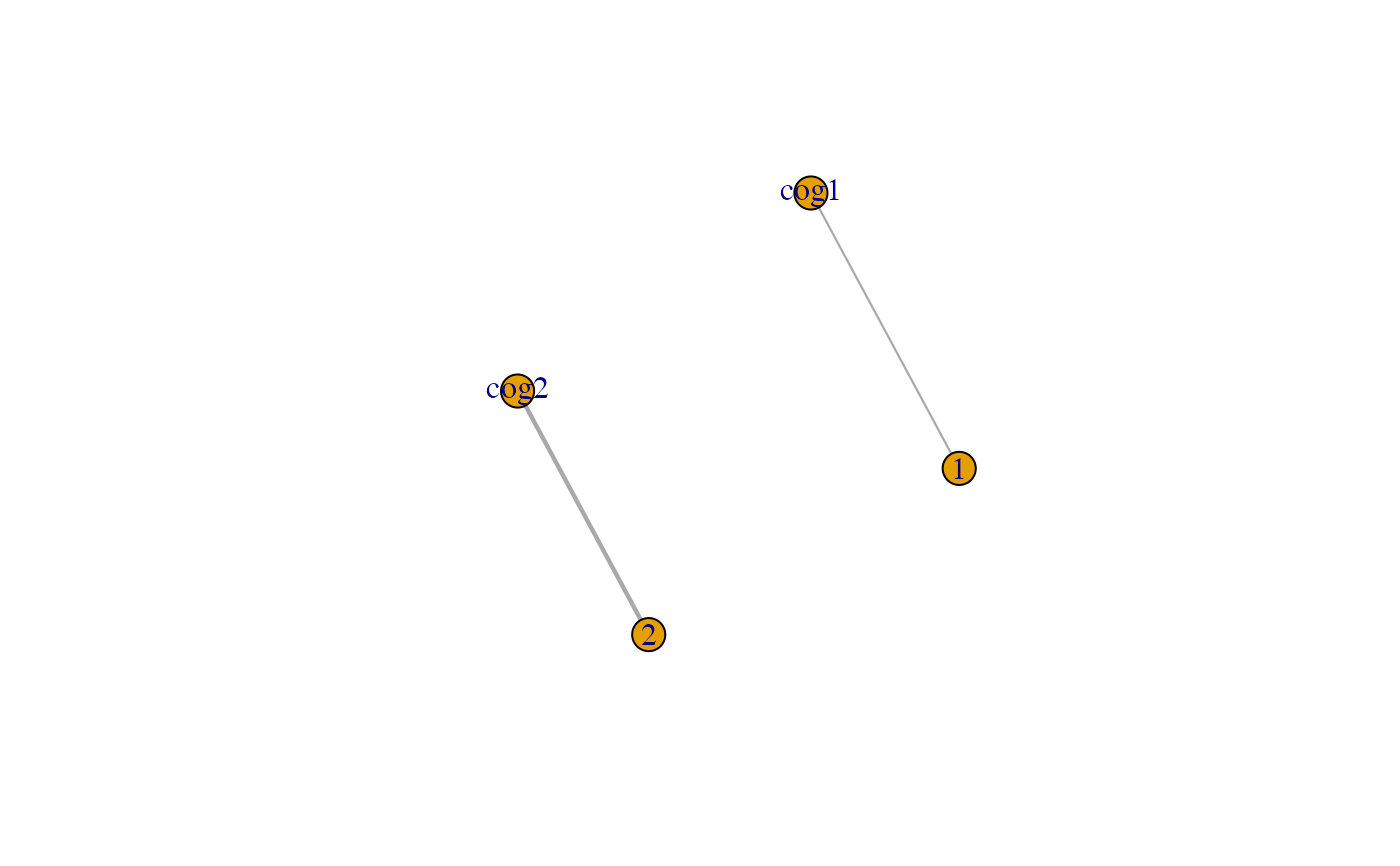This function matches two sets of variables using a bipartite graph and returns a data frame of the matched pairs.
bipartite_variable_match(
data,
cog_col = "cog",
voi_col = "voi",
plot = FALSE,
weight_type = "-log(p)",
edge_width_multiplier = 11,
directed = FALSE
)Arguments
- data
A data frame containing the required columns for matching.
- cog_col
Character. The name of the first variable column. Default is "cog".
- voi_col
Character. The name of the second variable column. Default is "voi".
- plot
Logical. If TRUE, plots the resulting bipartite graph. Default is FALSE.
- weight_type
Character. Defines the edge weight type for the bipartite graph. Options are "d" (distance), "-log(p)" (negative log p-value). Default is "-log(p)".
- edge_width_multiplier
Numeric. Multiplier for the edge width in the plot. Default is 11.
- directed
Logical. If TRUE, creates a directed graph. Default is FALSE.
Value
A data frame with matched pairs of variables and their associated data.
